It looks like you're using an Ad Blocker.
Please white-list or disable AboveTopSecret.com in your ad-blocking tool.
Thank you.
Some features of ATS will be disabled while you continue to use an ad-blocker.
share:
Yee haa I figured that dealio out... here are the rest of the photo's.. hand-held to show size...
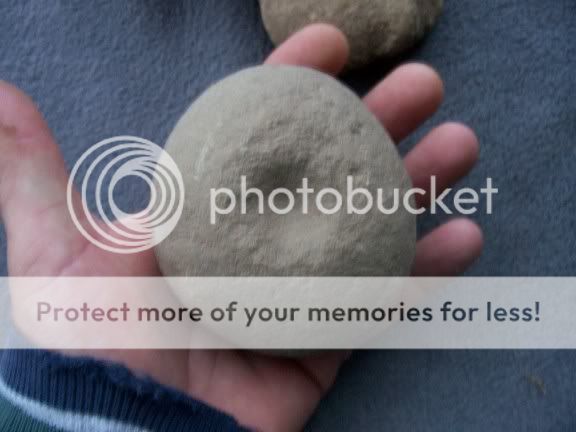

Close-up of peck marks on the poll end of a full groove Axe and close-up of polish tp bit end ans sides of a celt(un-grooved aze)...




An Axe can be made in a few hours of pecking and grinding, polishing takes a little longer, sand and fat mixture rubbed on with raw hide. Polishing is
important to help tool work better and lessen chance of brakeage. Axe's and other type tools were ment to be attached to a handle, easyest way is to
take a 4 foot length of willow sapling, heat lightly at middle section, and wrap 1 time around and tie together willow under head tight. Other hafting
method's were made from a tree low down where it meet's the root ball or other wood that would be pierced to hold tapered poll end. I have axe's I
found here in southern Ny from oz's and 4 inches long to over 12 lbs in weight and over a foot long. Different sized for different tasks and also
wood gathering was womens and kids work so that could help explain small size.
Excellent work Oneshot
Any chance of posting a few pics demonstrating your stone axe 'in action'?
Any chance of posting a few pics demonstrating your stone axe 'in action'?
I'll see if I can grab some pics of stone axe's in action, the one I made I gave away to a buddies kid. A guy in Oklahoma makes and use's ancient
tools to study the wear marks left on the stone, visable under magnification, he make's the stone tool's, use's the willow handle first then cut's
a heavyer handle and mounts it with hide glue he makes also. The use of a stone axe on a tree is a little different on the "power stroke", he said
it was in the angle of the strike...He also took a deer with bow and flint arrows and used flint knives to process meat, said it took a long time
compared to a steel knife but did the job just fine. I'll see if those pic's are avaluable to.
Some more photo's of stone tools...first pic is a hafted grooved hammer stone rounded working end, second pic is a full groove ax with very deep
groove.
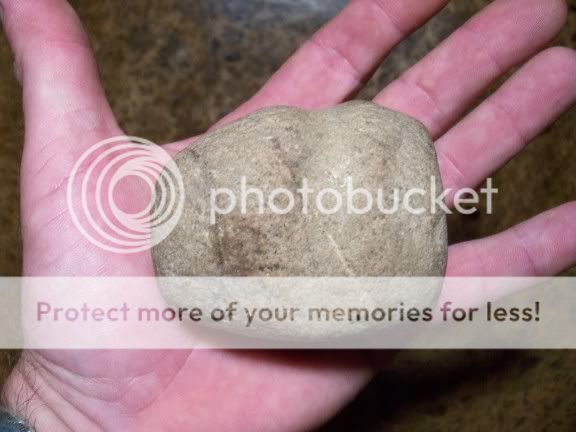
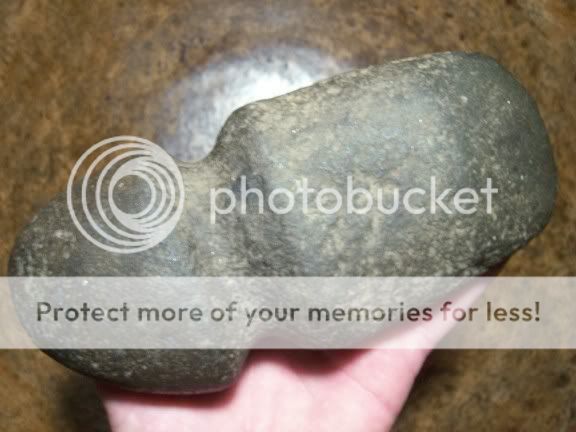
[edit on 11-10-2007 by Oneshot1]


[edit on 11-10-2007 by Oneshot1]
Some un-grooved axe's made from hard stone and slate called a "Celt", note smal size and the one on the right is from the polished slate culture
that dates around 3000-4000 years ago(cool tools from these peoples, they held highly polished black slate in high regard. These would be mounted in a
wood handle, the tapered end going into handle and use makeing it tighter as it jammed up in the smaller hole...second photo is of chipped/flaked
flint celt's, the one on the left is called a "Bow-Tie" axe and was used to process Buffalo...
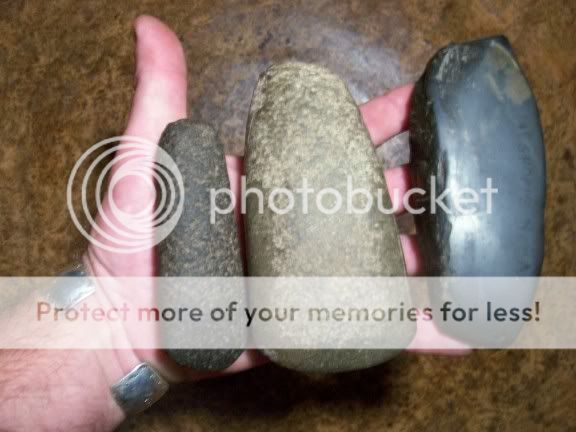

[edit on 11-10-2007 by Oneshot1]


[edit on 11-10-2007 by Oneshot1]
Last photo is of smaller stone tools, from the left...a chisel made from flint, a wedge or gouge from the polished slate culture, and two really neat
little wedges for splitting willow for makeing basket's, they have super finger polish from years of use.
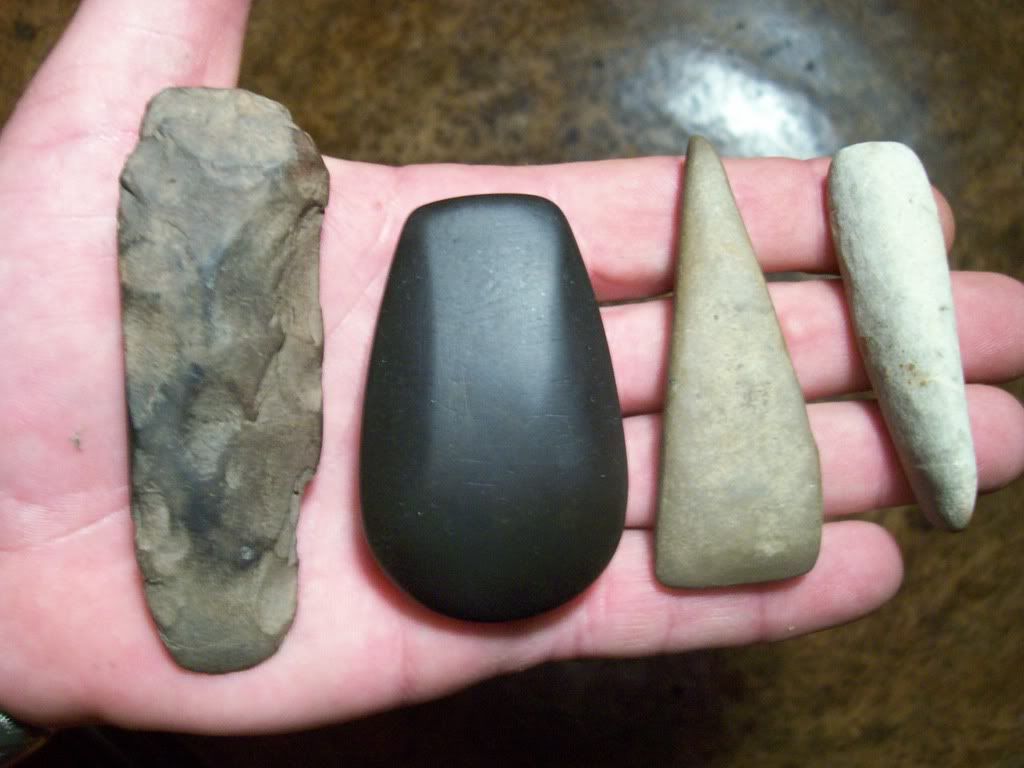
Mod Edit: Image Size – Please Review This Link.
[edit on 11-10-2007 by Jbird]

Mod Edit: Image Size – Please Review This Link.
[edit on 11-10-2007 by Jbird]
reply to post by Yarcofin
I love the flint napping videos. I have wanted to learn that for some time. It looks like the thick glass on the front of a TV tube might be just the thing to start learning this with. Lots of trashed TV's around to practice on.
I love the flint napping videos. I have wanted to learn that for some time. It looks like the thick glass on the front of a TV tube might be just the thing to start learning this with. Lots of trashed TV's around to practice on.
Hey thanks for the help MOD... Large trees would be cut and burned, afew tree's at a time, cutting on one while other's are burning. Planks up to 3
feet across were split off red woods by notching at bottom and up as high as their notched log ladder's could reach and then driving antler or stone
wedges in from the side and top cut. The Bow-Tie axe's are cool because their main use was cutting up Buffalo, the cut's were made at the bone
joints to break down the Buff into manageable carry loads back to camp for further processing. Chisel's were used to finish everything from dug-out
canoes, bowls and spoons, masks, etc. The little women's wedges were used to split willow for basket's, willow saplings/sucker growth were weighted
down in a stream to soften, then split with the little wedges and woven into baskets. Coiled basket's were common coast to coast and used from
everything from cooking, food storeage, load carrying and even to Burial.
groingrinder... TV's are a bad idea, they have a toxic substance on the inside of the glass that gets released as you flake away, "Jonstone" common
toilet bowl porcelen is a better idea. Knapping is hard but a skill that can be learned,the more you knap the better you will get as you learn the
tricks. I am VERY good at making a large cobble ball of flint into many small ones that have no use what so ever hehehe, ok maybe not that bad, some
even look like they will work, and I'm getting better at it. Slate is common in most staes and makes great sharp points and blades by flaking or even
grinding an edge on. All ancient american's could knap to some level of skill, but it is thought that there were craftsmen amoung them that would
make blades for trade to their group. The man or women that could make thin blades with awesome flaking(less effort to use, better penetration) were
highly honored people, with a good knife life is hard in the wild but with no knife life is almost impossible.
How about using pre-1992 issue 1p and 2p coins as a material source for bronze-casting arrow and axe-heads? They'd be ideal as they are in a readily
convenient size for smelting.
Composition: Bronze 97% copper, 2.5% zinc, 0.5% tin (until September 1992)
The post-1992 issue are copper-plated mild-steel and can be separated from the bronze by simple use of a magnet
Composition: Bronze 97% copper, 2.5% zinc, 0.5% tin (until September 1992)
The post-1992 issue are copper-plated mild-steel and can be separated from the bronze by simple use of a magnet
I saw a Neolitic style Bronze Axe I guy made the other day, chit didnt ask where he got the material, I did get hold of the guy that makes and use's
the stone axe's and he is sending me still photo's of ax being made and in use taking down tree's, I'll post them when I get 'em.
Here is a group of Cache/Preform Blades and knapping stone's with abrader's(quarter for scale, size 1"). On the right side they are kinda in steps,
from close to done to finished Blade. Spall's (large flakes) were knocked off the "mother" stone and by percusion (hitting with antler or stone rod
shaped tools)the preform was roughly made into shape. The Blade would be finished by Pressure Flaking into final shape. They are called Cache Blades
because they are normally found stacked together, sometimes numbering in the 100's. A Cache was like a bank, a safe place to store something for
future use, they would bury them where they would come back and get them on the next hunt. Called Preforms also because they are like 1/2 way done and
need only a little more work to be a Blade. The stones in the middle with the "V" groove's and the one above it are Abrader's, used to help make
Platforms for taking off flakes in a controlled manner. They were used by grinding the edge to make a flat spot for better "bite" of the knapping
tool.
The Rod shaped stones are Knapping tool's, the little dude was used for In-Direct Percussion, end was placed were need and top end was hit, this put the pressure in one small spot of the piece and helped to make nice deep nocthes and to work through any " stack"(portion of blade that is harder then rest of the piece and that doesnt want to come off).
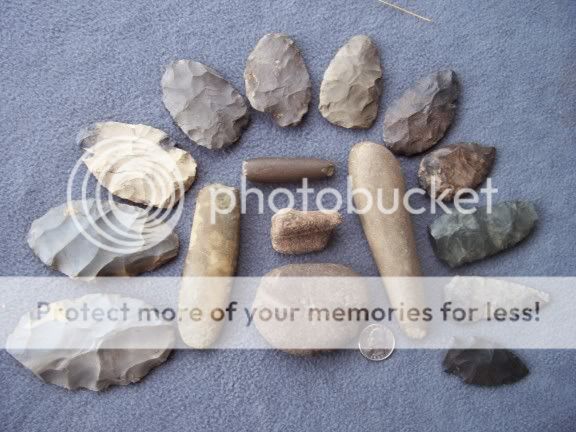
The Rod shaped stones are Knapping tool's, the little dude was used for In-Direct Percussion, end was placed were need and top end was hit, this put the pressure in one small spot of the piece and helped to make nice deep nocthes and to work through any " stack"(portion of blade that is harder then rest of the piece and that doesnt want to come off).

Bored looking at rocks?... The ancients liked beauty as well, here is a group of jewlery, shell beads, gorgets, shell, stone and bone pendants, coin
silver bracelets, and hair-pins, around an Anasazi bowl....
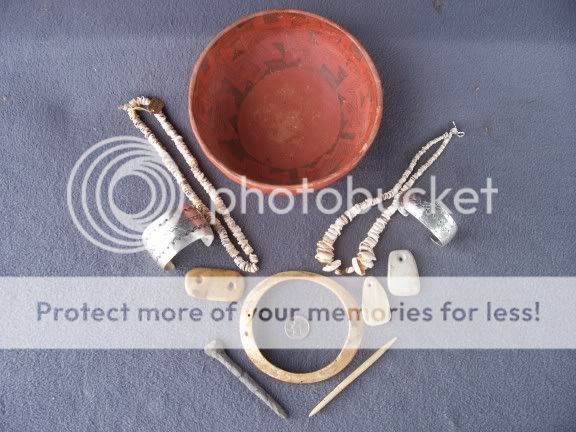

Closer view of the Anasazi Bowl, Type is called Wingate Black on Red, 1050-1200ad, from the Four Corners area of Arizona. Note the two holes at rim,
when a pressue crack showed they would tie together to extend the life of the vessel...Tempered with fine sand that contain's gold dust, it sparkles
in the sun.


The shell necklace and coin silver bracelet to the right are part of my daily wear. Both shell necklace's are from middle Cali. area, and date from
800-to 1200 years old. The Coin Silver bracelets are late 1800's and Indian made. The Pendants are shell and Anasazi pottery shards, from AZ also,
un-dated but at least 800-1200 years old....
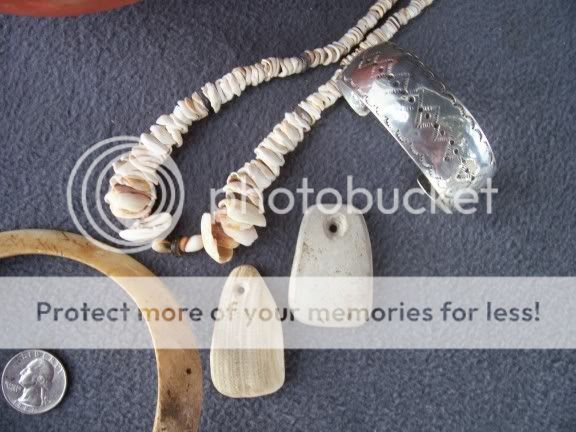

The stone with the two holes is called a "Gorget" and was worn as part of a necklace, found in PA. along the Delaware River....
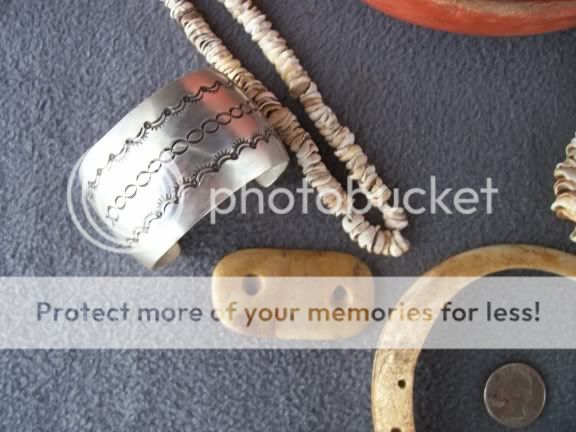

The large ring is from the huge Clams in the Sea of Cortez, they were traded far and wide, this one was found in New Mexico, and is very large,
probably an arm band with some holes for hanging bangles.... Long Pin's are for Hair Pins, one of chipped flint and the other of polished bone...
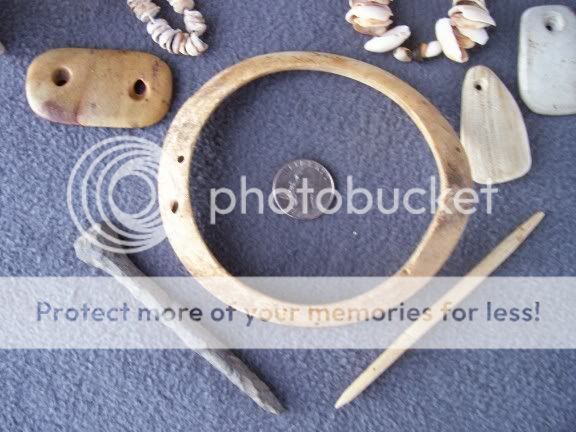

There was one book that i used to read as a youngster that was full of survival techniques from food scavenging/preparation dwelling construction and
defence that used to amaze me with the ingenuity, and that is the original 1st or 2nd edition Swiss Family Robinson.
If you can find a copy its well worth a read, just to see how they survive.
If you can find a copy its well worth a read, just to see how they survive.
new topics
-
Las Vegas UFO Spotting Teen Traumatized by Demon Creature in Backyard
Aliens and UFOs: 2 hours ago -
2024 Pigeon Forge Rod Run - On the Strip (Video made for you)
Automotive Discussion: 3 hours ago -
Gaza Terrorists Attack US Humanitarian Pier During Construction
Middle East Issues: 3 hours ago -
The functionality of boldening and italics is clunky and no post char limit warning?
ATS Freshman's Forum: 4 hours ago -
Meadows, Giuliani Among 11 Indicted in Arizona in Latest 2020 Election Subversion Case
Mainstream News: 5 hours ago -
Massachusetts Drag Queen Leads Young Kids in Free Palestine Chant
Social Issues and Civil Unrest: 5 hours ago -
Weinstein's conviction overturned
Mainstream News: 6 hours ago -
Supreme Court Oral Arguments 4.25.2024 - Are PRESIDENTS IMMUNE From Later Being Prosecuted.
Above Politics: 8 hours ago -
Krystalnacht on today's most elite Universities?
Social Issues and Civil Unrest: 8 hours ago -
Chris Christie Wishes Death Upon Trump and Ramaswamy
Politicians & People: 8 hours ago
top topics
-
Krystalnacht on today's most elite Universities?
Social Issues and Civil Unrest: 8 hours ago, 9 flags -
Weinstein's conviction overturned
Mainstream News: 6 hours ago, 7 flags -
Supreme Court Oral Arguments 4.25.2024 - Are PRESIDENTS IMMUNE From Later Being Prosecuted.
Above Politics: 8 hours ago, 7 flags -
University of Texas Instantly Shuts Down Anti Israel Protests
Education and Media: 11 hours ago, 6 flags -
Massachusetts Drag Queen Leads Young Kids in Free Palestine Chant
Social Issues and Civil Unrest: 5 hours ago, 4 flags -
Meadows, Giuliani Among 11 Indicted in Arizona in Latest 2020 Election Subversion Case
Mainstream News: 5 hours ago, 4 flags -
Gaza Terrorists Attack US Humanitarian Pier During Construction
Middle East Issues: 3 hours ago, 3 flags -
Chris Christie Wishes Death Upon Trump and Ramaswamy
Politicians & People: 8 hours ago, 2 flags -
Any one suspicious of fever promotions events, major investor Goldman Sachs card only.
The Gray Area: 13 hours ago, 2 flags -
2024 Pigeon Forge Rod Run - On the Strip (Video made for you)
Automotive Discussion: 3 hours ago, 1 flags
active topics
-
Meadows, Giuliani Among 11 Indicted in Arizona in Latest 2020 Election Subversion Case
Mainstream News • 10 • : chr0naut -
Supreme Court Oral Arguments 4.25.2024 - Are PRESIDENTS IMMUNE From Later Being Prosecuted.
Above Politics • 75 • : Vermilion -
University student disciplined after saying veganism is wrong and gender fluidity is stupid
Education and Media • 50 • : watchitburn -
VP's Secret Service agent brawls with other agents at Andrews
Mainstream News • 55 • : CarlLaFong -
Cats Used as Live Bait to Train Ferocious Pitbulls in Illegal NYC Dogfighting
Social Issues and Civil Unrest • 23 • : Ravenwatcher -
-@TH3WH17ERABB17- -Q- ---TIME TO SHOW THE WORLD--- -Part- --44--
Dissecting Disinformation • 680 • : 777Vader -
Is there a hole at the North Pole?
ATS Skunk Works • 40 • : Oldcarpy2 -
Fossils in Greece Suggest Human Ancestors Evolved in Europe, Not Africa
Origins and Creationism • 89 • : whereislogic -
University of Texas Instantly Shuts Down Anti Israel Protests
Education and Media • 197 • : NorthOS -
Candidate TRUMP Now Has Crazy Judge JUAN MERCHAN After Him - The Stormy Daniels Hush-Money Case.
Political Conspiracies • 790 • : Oldcarpy2
